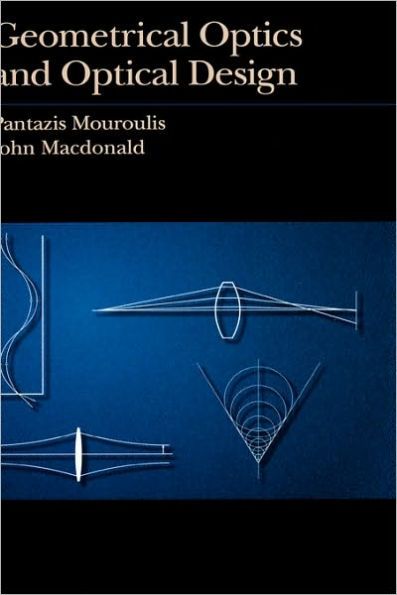Table of Contents
Chapter 1: Rays and the Foundations of Geometrical Optics
1.1. Waves, wavefronts, and rays
1.2. Propagaton of wavefronts, reflection, refraction
1.3. Fermat's principle
1.4. Irradiance and the inverse-square law
1.5. The basic postulates of geometrical optics
Chapter 2: Review of Elementary Ray Optics
2.1. Plane Surfaces
2.2. Curved Surfaces: Focusing
Chapter 3: Imagery by a Single Surface and a Thins Lens
3.1. The sign convention
3.2. The paraxial approximation
3.3. Imagery by a single surface
3.4. Mirrors
3.5. Imagery by a then lens
3.6. Imagery of an extended object. Magnification.
3.7. The one-component design problem
3.8. Other types of magnification
Chapter 4: Gaussian Optics
4.1. The paraxial height and angle variables
4.2. Paraxial raytracing for systems of many surfaces
4.3. The Optical Invariant
4.4. Principal planes
4.5. Power and principal planes of a system of two separated components.
4.6. Thick lenses: power and location of principal planes
4.7. Nodal points, measurement of focal length
4.8. Additional topics in Gaussian optics
4.9. Summary of Gaussian optics
4.10. The two-component design problem
Chapter 5: Putting it All Together
5.1. Stops and pupils
5.2. Significance and use of the Marginal and Pupil Rays
5.3. Light flux transmission through optical systems
Chapter 6: Gaussian Optics of Optical Instruments and Components
6.1. The telescope
6.2. The microscope
6.3. Projection optics
6.4. The eye
6.5. Reflecting prisms
6.6. Cylindrical and anamorphic optics
6.7. Gradient index optics
6.8. Diffractive optics
Chapter 7: Introduction to Aberrations
7.1. Chromatic Aberration
7.2. Introduction to monochromatic aberrations
7.3. The wave aberration function and classification of aberration
Chapter 8: Computation of Primary Aberrations
8.1. The Seidel aberration coefficients
8.2. Astigmatism and field curvature
8.3. Primary aberrations of a reflecting prism (plane parallel plates)
8.4. Primary aberrations of a spherical mirror
Chapter 9: Aberrations of a Thin Lens in Air
9.1. Central aberrations (stop at the lens)
9.2. Thin lens aberration with a remote stop
9.3. The two- and three-component solution with fixed Sigma Kappa.
Chapter 10: Optical Design
10.1. The optical design process
10.2. Making the system real: thickening, total aberration
10.3. Design example: operating spectacles
10.4. Optimisation
10.5. Pupils and pupil imagery
10.6. Aspherics
10.7. A brief guide to optical design software
Appendix 1: Matrix methods in paraxial optics
Appendix 2: Gaussian beam raytracing
Appendix 3: Finite raytracing
Appendix 4: Shift of focus
Appendix 5: Two computer programs
Appendix 6: Thin lens bending program



